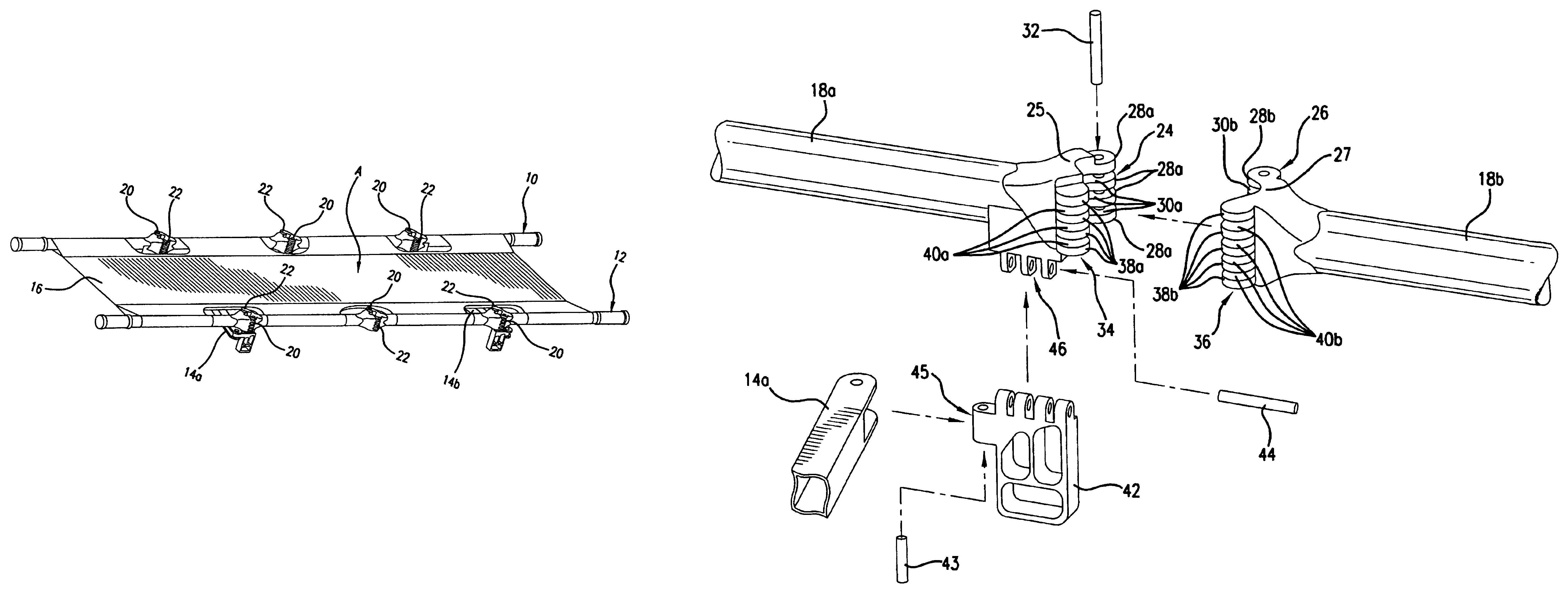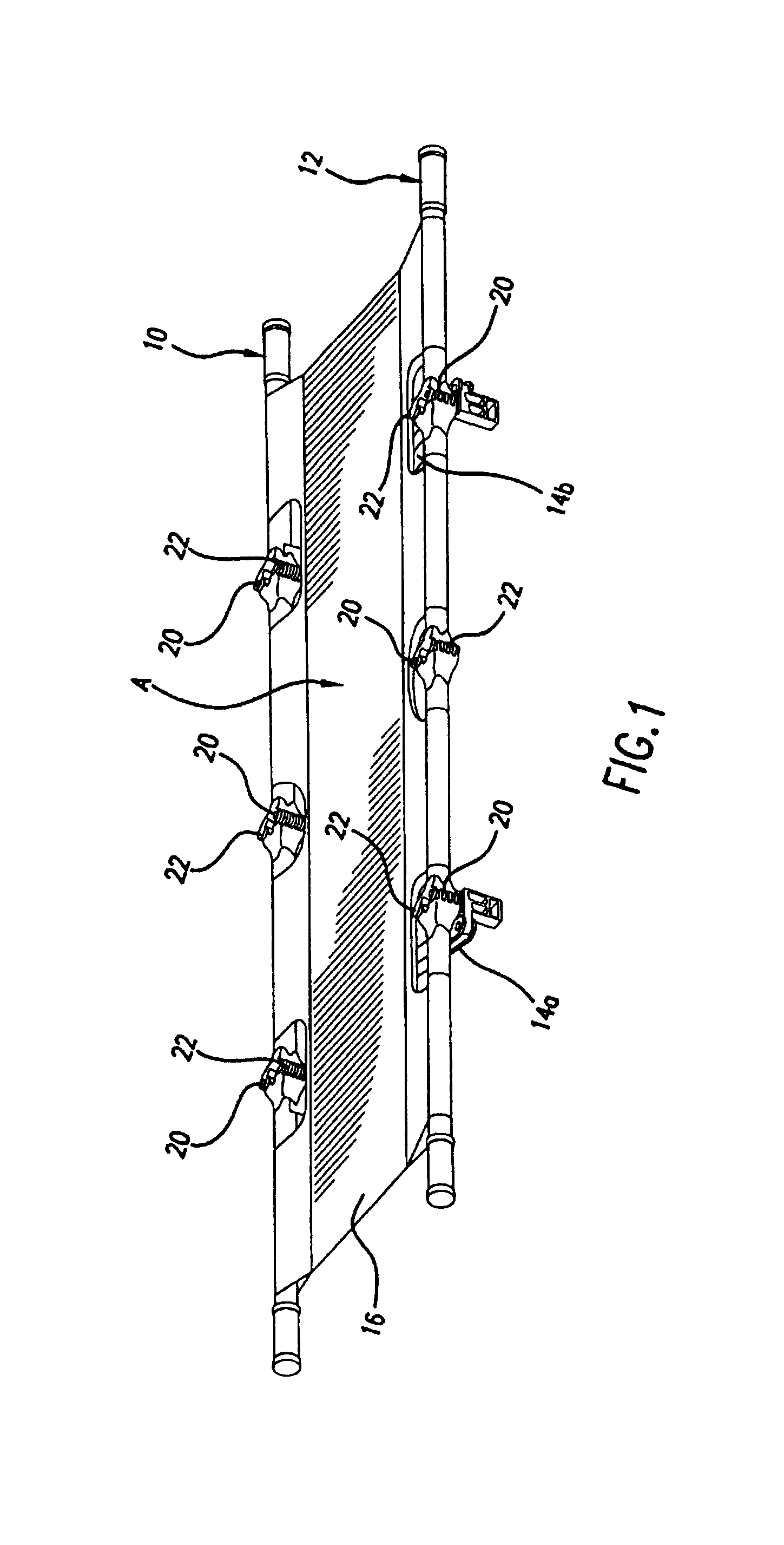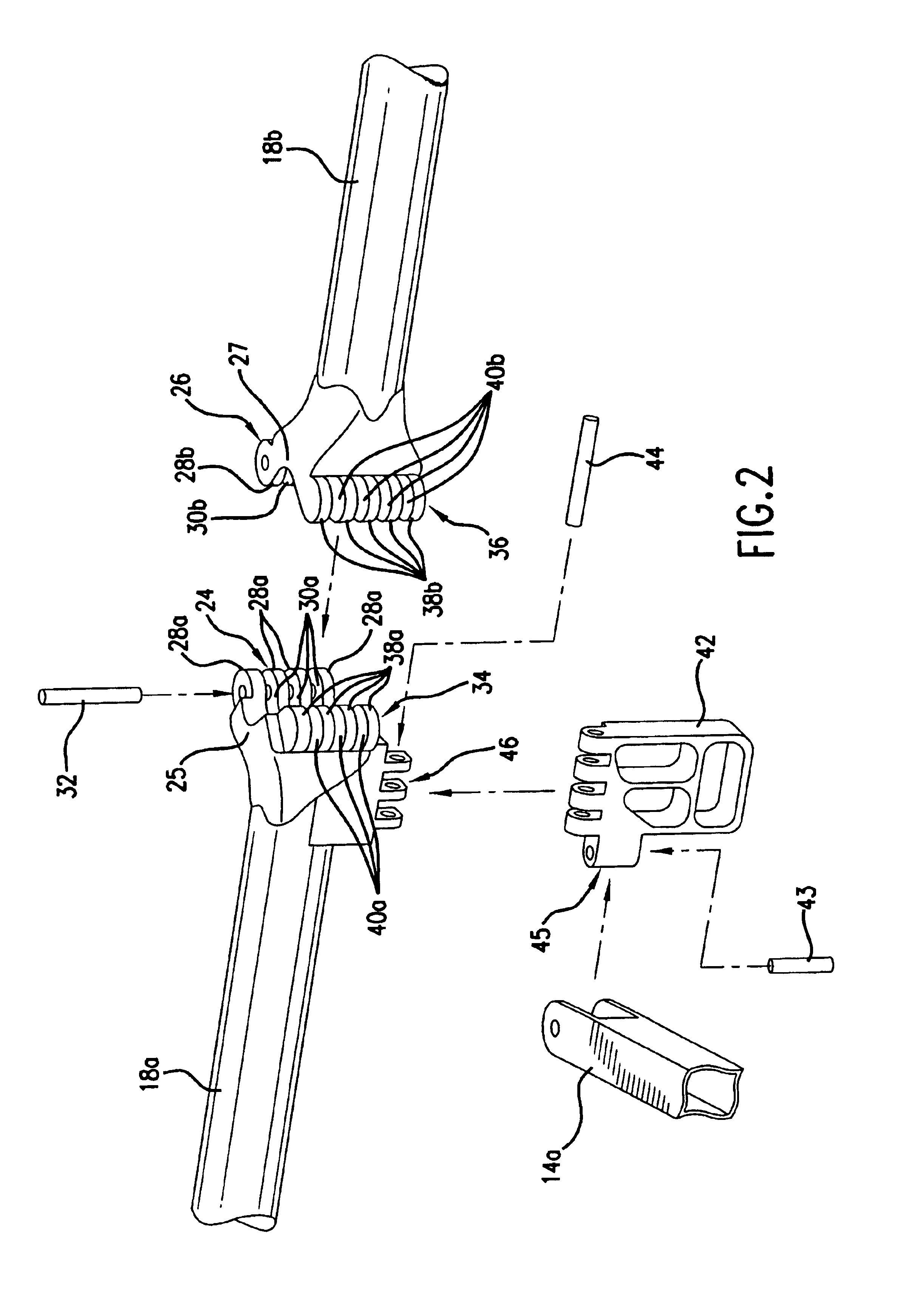Lightweight decontaminable composite stretcher
a composite stretcher, light weight technology, applied in the field of stretchers, cots, etc., can solve the problems of not being able to teach the handling not being able to resist chemical and biological warfare agents, and not being able to teach the handle in a manner sufficient, so as to and restrict the bending and twisting of the frame arm
- Summary
- Abstract
- Description
- Claims
- Application Information
AI Technical Summary
Benefits of technology
Problems solved by technology
Method used
Image
Examples
Embodiment Construction
With reference to the drawings, the invention will now be described in more detail. In this patent the term “hazardous materials” specifically includes chemical and biological warfare agents, along with hazardous, dangerous and otherwise unsafe chemicals requiring a person to be decontaminated after expose, radioactive or poisonous elements, and human bodily fluids. Referring to FIG. 1, a lightweight decontaminable stretcher, designated generally as A, is shown for transporting injured persons and persons exposed to hazardous materials. In the preferred embodiment, stretcher A includes a molded frame assembly having a first frame pole, designated generally as 10, and a second frame pole, designated generally as 12. Frame poles 10 and 12 are interconnected by spreader bars 14a and 14b (best shown in FIG. 5a) for maintaining first frame pole 10 and second frame poles 12 in a laterally spaced arrangement. As described in detail below, spreader bars 14a and 14b may be retracted to draw ...
PUM
 Login to View More
Login to View More Abstract
Description
Claims
Application Information
 Login to View More
Login to View More - R&D
- Intellectual Property
- Life Sciences
- Materials
- Tech Scout
- Unparalleled Data Quality
- Higher Quality Content
- 60% Fewer Hallucinations
Browse by: Latest US Patents, China's latest patents, Technical Efficacy Thesaurus, Application Domain, Technology Topic, Popular Technical Reports.
© 2025 PatSnap. All rights reserved.Legal|Privacy policy|Modern Slavery Act Transparency Statement|Sitemap|About US| Contact US: help@patsnap.com



